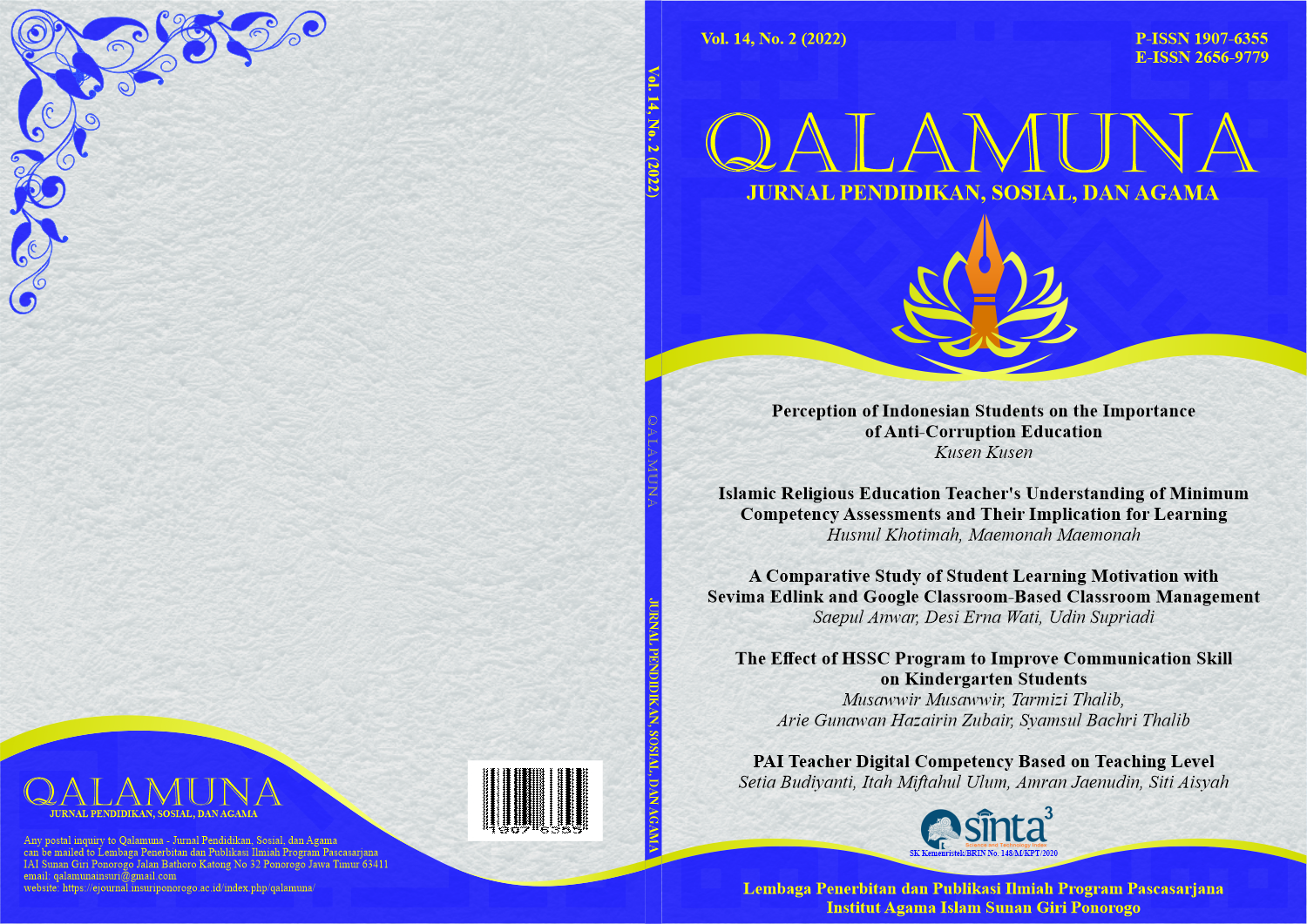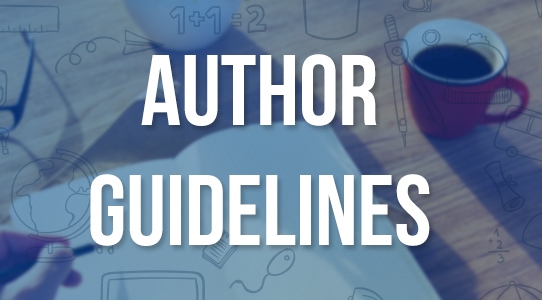Adaptation Transformation of Religious Education in Islamic Schools: Learning Innovation in SMP IT Al-Fityah and MTs Al-Munawwarah
DOI:
https://doi.org/10.37680/qalamuna.v14i2.3669Keywords:
islamislamic religious education; learning innovation; islamic schoolsAbstract
This study aims to identify the elements of innovation in learning, discern differences and similarities, and identify the potential for innovation in learning Islamic Religious Education within two Islamic schools in Binjai City. The research methodology employed a qualitative approach. Data collection techniques included in-depth interviews, observations, and documentation. The data underwent descriptive analysis involving data reduction, presentation, and conclusion. The results revealed that innovation in Islamic Religious Education learning in both Islamic schools in Binjai City is demonstrated through curriculum enrichment, encompassing enrichment, remedial, and coaching programs. At SMP IT Al-Fityah, the array of learning methods has expanded beyond lectures to incorporate discussions, exercises, assignments, homework, and presentations. Learning materials span from manual to digital, including LKS to e-learning, and encompass settings from traditional classrooms to laboratories. The assessment of learning in both schools employs both testing and non-test methods. Despite differences in the class grouping system - where SMP IT Al-Fityah employs small groups and MTs Al-Munawwarah adopts a package system - the commonality lies in utilizing the National Curriculum as the foundation for enriching Islamic Religious Education learning.
References
Andriyandi, A. P., Darmalaksana, W., Maylawati, D. S., Irwansyah, F. S., Mantoro, T., & Ramdhani, M. A. (2020). Augmented reality using features accelerated segment test for learning tajweed. Telkomnika (Telecommunication Computing Electronics and Control), 18(1), 208–216. https://doi.org/10.12928/TELKOMNIKA.V18I1.14750
Beemsterboer, M. (2022). How Can Islamic Primary Schools Contribute to Social Integration? Religions, 13(9). https://doi.org/10.3390/rel13090849
Creswell, J. W., & Creswell, J. D. (2018). Research Design: Qualitative, Quantitative, and Mixed Methods Approaches.
Demirel Ucan, A., & Wright, A. (2019). Improving the pedagogy of Islamic religious education through an application of critical religious education, variation theory, and the learning study model. British Journal of Religious Education, 41(2), 202–217. https://doi.org/10.1080/01416200.2018.1484695
Denzin, N. K., & Lincoln, Y. S. (Eds). (2018). The SAGE Handbook of Qualitative Research. In Sage Publications (Vol. 195, Issue 5). https://doi.org/10.1007/s11229-017-1319-x
Hanafi, Y., Murtadho, N., Ikhsan, A., & Diyana, T. N. (2020). Reinforcing public university student’s worship education by developing and implementing mobile-learning management system in the ADDIE instructional design model. International Journal of Interactive Mobile Technologies, 14(2), 215–241. https://doi.org/10.3991/ijim.v14i02.11380
Hastasari, C., Setiawan, B., & Aw, S. (2022). Students’ communication patterns of Islamic boarding schools: the case of Students in Muallimin Muhammadiyah Yogyakarta. Heliyon, 8(1). https://doi.org/10.1016/j.heliyon.2022.e08824
Jamilah, S. (2021). Moderate Islamic education to enhance nationalism among Indonesian Islamic student organizations in the era of society 5.0. Journal of Social Studies Education Research, 12(3), 79–100.
Kosim, M., Muqoddam, F., Mubarok, F., & Laila, N. Q. (2023). The dynamics of Islamic education policies in Indonesia. Cogent Education, 10(1). https://doi.org/10.1080/2331186X.2023.2172930
Kultsum, U., Parinduri, M. A., & Karim, A. (2022). Comparative studies between public and private Islamic schools in the era of globalization. International Journal of Evaluation and Research in Education, 11(1), 421–430. https://doi.org/10.11591/ijere.v11i1.22182
Lafrarchi, N. (2020). Assessing Islamic religious education curriculum in flemish public secondary schools. Religions, 11(3). https://doi.org/10.3390/rel11030110
Maemonah, M., Zuhri, H., Masturin, M., Syafii, A., & Aziz, H. (2023). Contestation of Islamic educational institutions in Indonesia: Content analysis on social media. Cogent Education, 10(1). https://doi.org/10.1080/2331186X.2022.2164019
Miles, M. B., Huberman, A. M., & Saldaña, J. (2014). Qualitative data analysis: a methods sourcebook (Third Edit). SAGE Publications.
Miskiah, M., Suryono, Y., & Sudrajat, A. (2019). Integration of information and comunication technology into Islamic religious education teacher training | Integrasi teknologi informasi komunikasi dalam diklat guru pendidikan agama Islam (PAI). Cakrawala Pendidikan, 38(1), 130–140. https://doi.org/10.21831/cp.v38i1.23439
Rahman, B. A. (2022). Islamic revival and cultural diversity: Pesantren’s configuration in contemporary Aceh, Indonesia. Indonesian Journal of Islam and Muslim Societies, 12(1), 201–229. https://doi.org/10.18326/ijims.v12i1.201-229
Rahmat, M., & Yahya, M. W. B. H. M. (2022). The Impact of Inclusive Islamic Education Teaching Materials Model on Religious Tolerance of Indonesian Students. International Journal of Instruction, 15(1), 347–364. https://doi.org/10.29333/iji.2022.15120a
Rissanen, I. (2020). Negotiations on Inclusive Citizenship in a Post-secular School: Perspectives of “Cultural Broker” Muslim Parents and Teachers in Finland and Sweden. Scandinavian Journal of Educational Research, 64(1), 135–150. https://doi.org/10.1080/00313831.2018.1514323
Saada, N. (2020). Perceptions of democracy among Islamic education teachers in Israeli Arab high schools. Journal of Social Studies Research, 44(3), 271–280. https://doi.org/10.1016/j.jssr.2020.05.003
Saefudin, A. (2019). Penerapan Model Pembelajaran CTL Untuk Meningkatkan Prestasi Belajar Peserta Didik Kelas XII IPS 5 SMA Negeri 2 Purbalingga. Jurnal Artefak. https://jurnal.unigal.ac.id/index.php/artefak/article/view/1910
Saefudin, A., Wasino, Susanto, & Musadad, A. A. (2023). “The Netherlands in Indonesia, 1945-49”: An Analysis of Argument Narrative Structure in Indonesian History Textbook. Theory and Practice in Language Studies, 13(7), 1721–1729. https://doi.org/10.17507/tpls.1307.15
Sateemae, M., Abdel-Monem, T., Sateemae, S., Uma, A., & Bulling, D. (2022). Violence and traumatic exposures among Islamic high school students in Thailand’s subnational conflict. Intervention, 20(1), 14–27. https://doi.org/10.4103/INTV.INTV_2_21
Selim, N., & Abdalla, M. (2022). Exploring Motivation and Engagement: Voices of Adolescent Non-Arab Muslim Learners of Arabic at Australian Islamic Schools. Religions, 13(6). https://doi.org/10.3390/rel13060560
Sulistianingsih, Putra, J. M., Yusron, A., Saefudin, A., Harini, H., & Saddhono, K. (2022). The Role of School Autonomy in Promoting Collaboration and Competition Among Schools. Qalamuna - Jurnal Pendidikan, Sosial, Dan Agama, 14(2), 433–446. https://doi.org/10.37680/qalamuna.v14i2.3325
Suyadi, Sumaryati, Hastuti, D., & Saputro, A. D. (2020). Early childhood education teachers’ perception of integrating anti-corruption education into Islamic religious education in Bawean Island Indonesia. Elementary Education Online, 19(3), 1703–1714. https://doi.org/10.17051/ilkonline.2020.734838
Trigiyatno, A., & Sutrisno. (2022). Dharar as a Reason for Divorce Lawsuit in Fiqh and Legislation of Some Muslim Countries: Study on Indonesia, Bahrain, Sudan, Qatar, and Morocco. Al-Istinbath: Jurnal Hukum Islam, 7(1), 203–222. https://doi.org/10.29240/jhi.v7i1.3368
Downloads
Published
How to Cite
Issue
Section
License
Authors who submit manuscript retain its copyright and grant publisher right of first publication licensed under a Creative Commons Attribution-ShareAlike 4.0 International License (CC BY-SA 4.0) that allows others to access (search, read, download, and cite), share (copy and redistribute the material in any medium or format) and adapt (remix, transform, and build upon any material) the work for any lawful purpose, even commercially with an acknowledgement of the work's authorship and initial publication in Qalamuna: Jurnal Pendidikan, Sosial, dan Agama.












